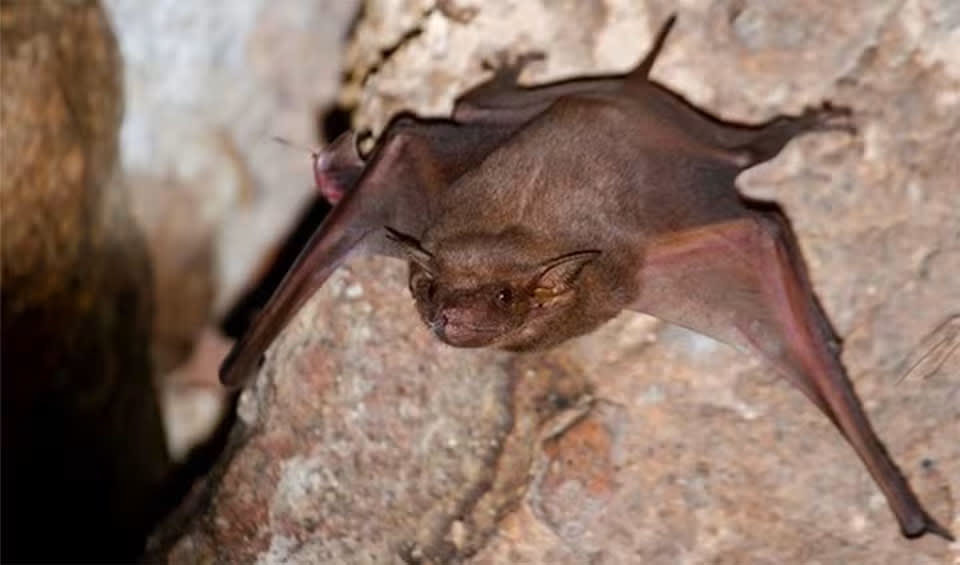As suggested by their common name, these bats are notable for their partially furless bodies, with brown or greyish fur covering their backs and light grey fur on their undersides, while the lower back and abdomen areas remain naked. This unique feature, along with their relatively flat heads and long, cone-shaped snouts, contributes to their distinct appearance and aids in thermoregulation within their warm habitats.
Sexual dimorphism is pronounced in Naked-rumped tomb bats, with males possessing a gland on their upper chest, absent in females. This gland is thought to play a role in reproductive behaviors, possibly involved in attracting mates or marking territory.
Known for their agility in flight, Naked-rumped tomb bats are adept hunters, skillfully navigating open areas to catch a variety of insects. Their diet includes cockroaches, moths, beetles, crickets, and flying ants, making them valuable for controlling pest populations. Their quick and high-flying patterns, coupled with their ability to maneuver adeptly, make them efficient predators in their ecosystems.
Communication among Naked-rumped tomb bats involves metallic squeaking sounds, which serve various social and navigational purposes. Additionally, like many bat species, they rely on echolocation to navigate and locate prey in the darkness. Echolocation involves emitting high-frequency sounds that bounce off objects and return as echoes, allowing the bats to construct a sonic map of their surroundings. This ability is crucial for their survival, enabling them to hunt effectively and avoid obstacles during flight.
Distribution
 Afghanistan
Afghanistan Algeria
Algeria Burkina Faso
Burkina Faso Chad
Chad DR Congo (Kinshasa)
DR Congo (Kinshasa) Djibouti
Djibouti Egypt
Egypt Eritrea
Eritrea Ethiopia
Ethiopia Ghana
Ghana India
India Iran
Iran Iraq
Iraq Israel
Israel Jordan
Jordan Kenya
Kenya Kuwait
Kuwait Lebanon
Lebanon Libya
Libya Mauritania
Mauritania Morocco
Morocco Myanmar
Myanmar Niger
Niger Nigeria
Nigeria Oman
Oman Pakistan
Pakistan Qatar
Qatar Saudi Arabia
Saudi Arabia Senegal
Senegal Somalia
Somalia Sudan
Sudan Syria
Syria Tanzania
Tanzania Togo
Togo Tunisia
Tunisia Turkey
Turkey UAE
UAE Uganda
Uganda Yemen
YemenAnything we've missed?
Help us improve this page by suggesting edits. Glory never dies!
Suggest an editGet to know me
Terrestrial / Aquatic
Altricial / Precocial
Polygamous / Monogamous
Dimorphic (size) / Monomorphic
Active: Diurnal / Nocturnal
Social behavior: Solitary / Pack / Herd / Colony
Diet: Carnivore / Herbivore / Omnivore / Piscivorous / Insectivore
Migratory: Yes / No
Domesticated: Yes / No
Dangerous: Yes / No




